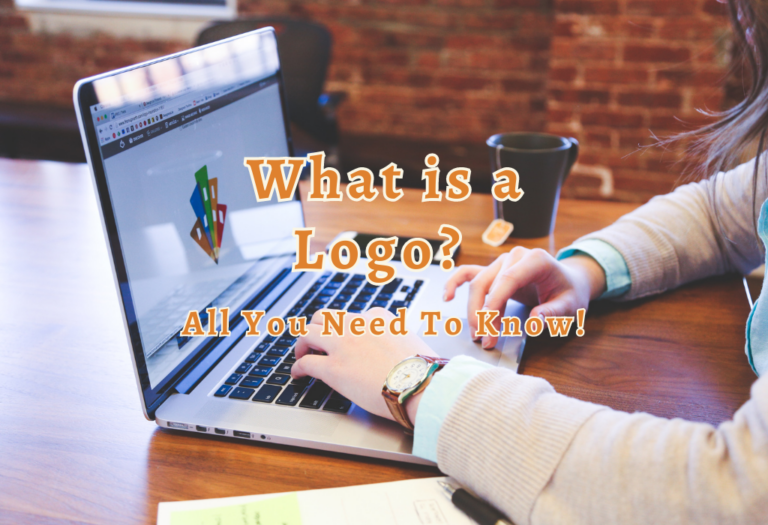UI vs. UX Design: What’s the Difference? Demystified
When it comes to designing a website or application, two terms often get thrown around interchangeably – UI and UX design. While they both play crucial roles in creating an effective user experience, they are not the same thing.
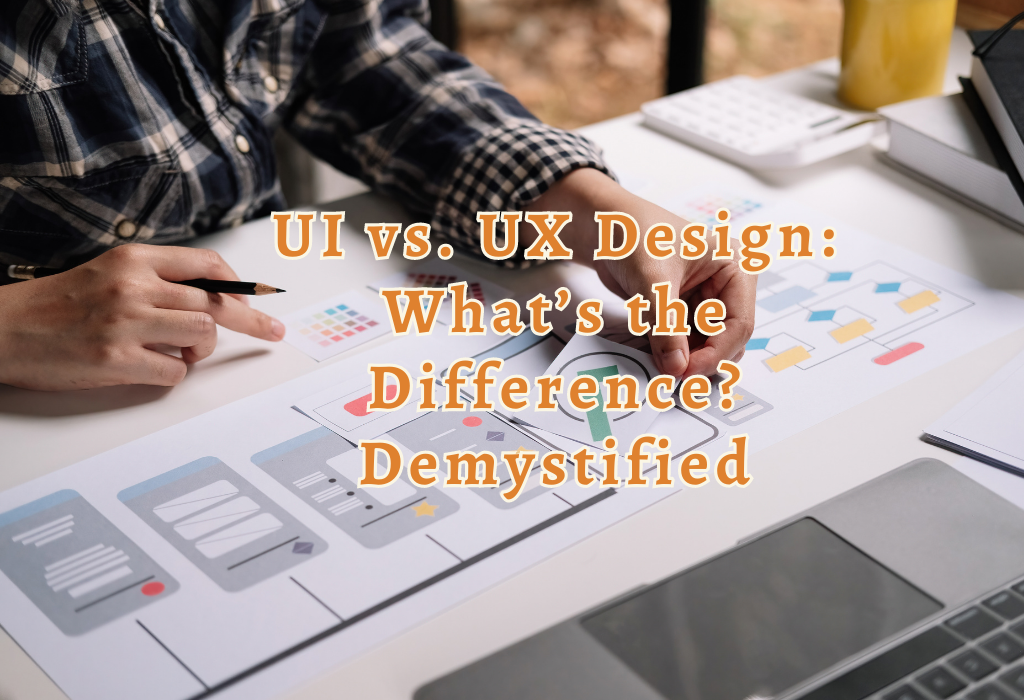
More Resources :
The Main Differences
UI stands for User Interface, while UX stands for User Experience. The main difference between these two is that UI design focuses on the visual elements of a product, such as buttons, icons, typography, color schemes, etc., whereas UX design refers to how users interact with a product from start to finish.
The Importance of Good UI/UX Design for Websites
A great website should be visually appealing while providing excellent functionality to its visitors.
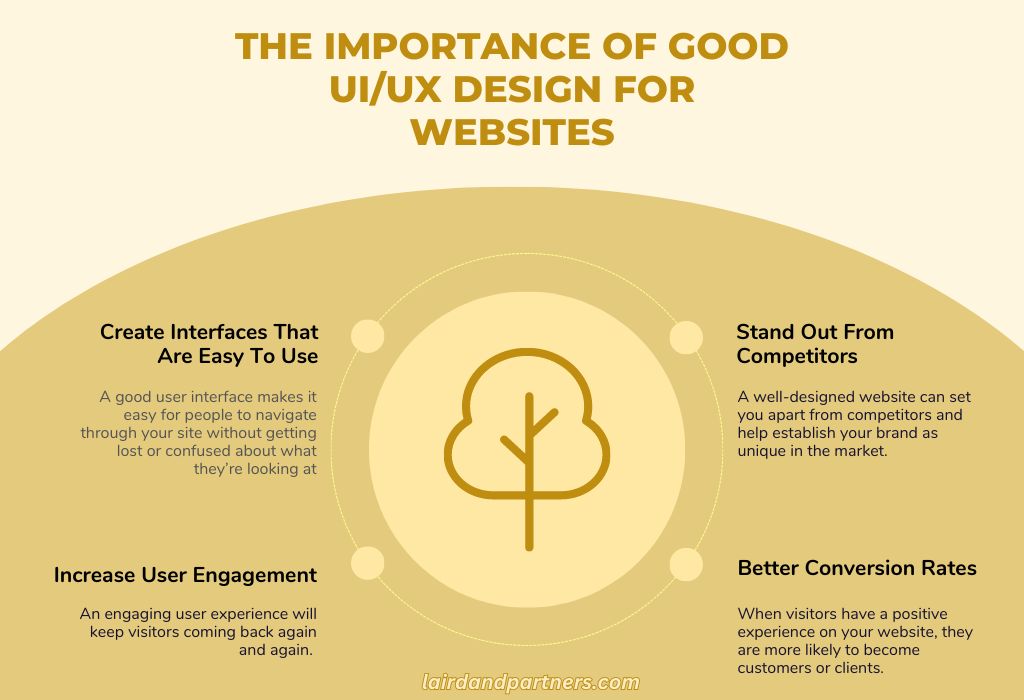
The following points highlight why good UI/UX design matters:
Now that you have a brief idea of what both terms mean let’s explore them in detail!
UI Design
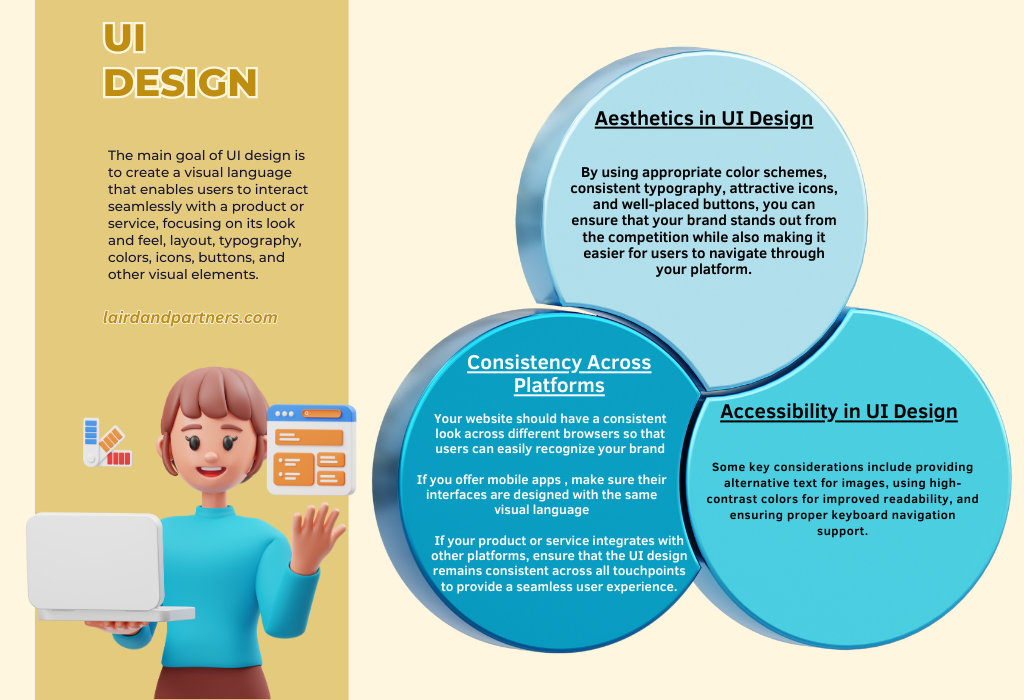
The main goal of UI design is to create a visual language that enables users to interact seamlessly with a product or service, focusing on its look and feel, layout, typography, colors, icons, buttons, and other visual elements. A well-crafted UI can significantly improve the user experience by providing clear directions and feedback as they move around an app or website.
Aesthetics in UI Design
The aesthetic appeal of your product’s interface plays a crucial role in attracting users and keeping them engaged with your content. By using appropriate color schemes, consistent typography, attractive icons, and well-placed buttons, you can ensure that your brand stands out from the competition while also making it easier for users to navigate through your platform.
Consistency Across Platforms
Accessibility in UI Design
By following best practices for accessible design, you can ensure that users with disabilities can easily interact with your product or service.
Some key considerations include providing alternative text for images, using high-contrast colors for improved readability, and ensuring proper keyboard navigation support.
UX Design
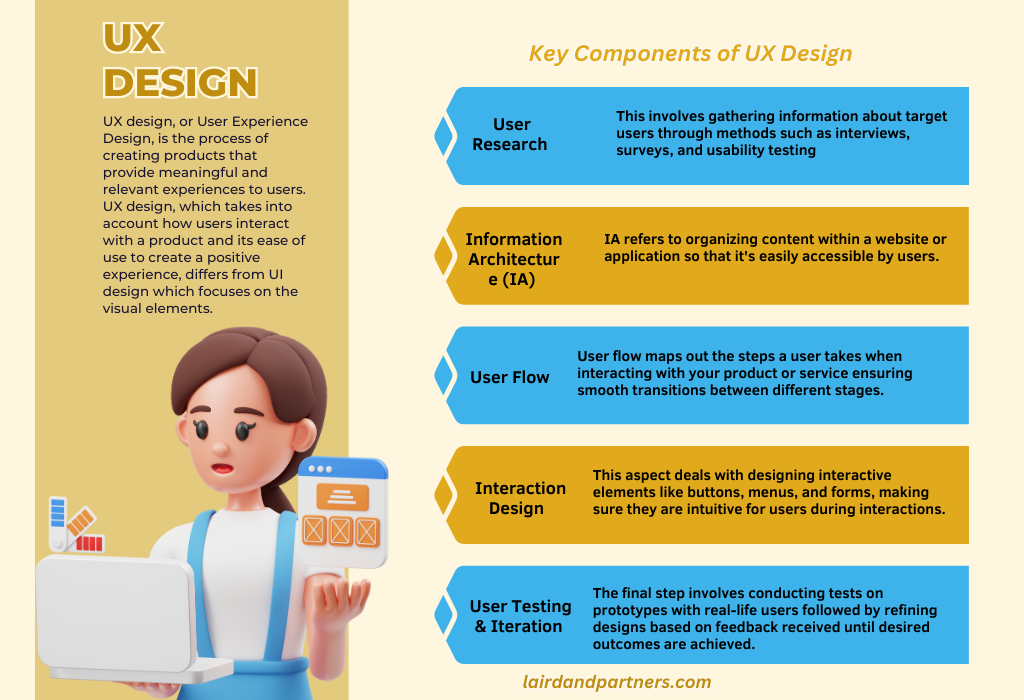
UX design, or User Experience Design, is the process of creating products that provide meaningful and relevant experiences to users. UX design, which takes into account how users interact with a product and its ease of use to create a positive experience, differs from UI design which focuses on the visual elements. The goal of UX designers is to understand user needs and preferences so they can develop solutions that meet those requirements while also being easy to use.
Key Components of UX Design
This involves gathering information about target users through methods such as interviews, surveys, and usability testing in order to understand their needs and expectations better.
IA refers to organizing content within a website or application so that it’s easily accessible by users. A well-structured IA helps ensure seamless navigation throughout your digital platform.
User flow maps out the steps a user takes when interacting with your product or service – from initial engagement through task completion – ensuring smooth transitions between different stages.
This aspect deals with designing interactive elements like buttons, menus, and forms, making sure they are intuitive for users during interactions.
The final step involves conducting tests on prototypes with real-life users followed by refining designs based on feedback received until desired outcomes are achieved.
UI vs. UX Design: What’s the Difference?
While both UI and UX design are important aspects of creating a successful product or service, they are two distinct disciplines with different goals. UI design focuses on the visuals of an interface, while UX design focuses on how users interact with it. To better understand their differences and how they work together, let’s explore each discipline in more detail.
The Focus of UI Design
As mentioned before, a good UI should include elements such as layout, typography, colors, icons, and buttons to create a visually appealing experience that aids user navigation and builds brand recognition. A well-designed user interface not only helps users navigate through your platform easily but also contributes to building brand recognition.
The Focus of UX Design
User Experience (UX) design goes beyond aesthetics by focusing on functionality and usability to create products that provide meaningful experiences for users. It involves understanding user needs and preferences to develop intuitive interactions that cater to those requirements effectively – be it finding information quickly or completing tasks efficiently within an app or website.
How UI and UX Design Complement Each Other
Although they have different focuses, both UI and UX design are essential components of any successful digital product or service. A pleasing UI can draw in users to your platform, whereas a well-crafted UX makes sure that those customers find value in what you are providing – this eventually leads to greater customer contentment and loyalty.
In fact, Forbes highlights the connection between UI and UX design, stating that one cannot exist without the other. For example, an aesthetically pleasing app with poor usability will not retain users for long; similarly, a highly functional website with unattractive visuals may deter potential customers from exploring further.
Therefore, it is crucial for businesses to invest in both disciplines when developing their products or services – ensuring seamless integration between visual appeal and functionality for an overall enjoyable user experience.
Benefits of UI Design
Investing in high-quality UI design can bring numerous advantages to your business:
Aesthetic Appeal & Brand Identity
An attractive and visually appealing interface is more likely to engage users and keep them interested in exploring your product further.
More Resources :
Improved Usability & Accessibility
Good UI design ensures that all interactive elements are easy to use by considering factors like button size, placement of controls within reach of the user’s thumb when using mobile devices, proper contrast between text colors against background colors for better readability, etc. This attention to detail results in improved usability, which translates into higher user satisfaction rates.
Increased Conversion Rates & User Retention
Reduced Development Time & Cost
Investing in UI design from the outset of a project helps identify potential usability issues early on, allowing developers to address them before they become costly problems down the line. By following established usability heuristics, designers can create interfaces that are both functional and aesthetically pleasing while minimizing rework during the development stages.
Benefits of UX Design
By investing in high-quality UX design, businesses can reap a variety of benefits, such as:
Increased Customer Satisfaction
A well-designed user experience can significantly enhance customer satisfaction by ensuring that users find it easy to navigate through your app or website. By providing customers with easy access to the necessary information, they can make informed decisions that result in higher conversion rates, repeat usage, and positive word-of-mouth recommendations. This also leads to higher conversion rates, repeat usage, and positive word-of-mouth recommendations from satisfied customers.
Reduced Support Costs
By making sure that your interface is intuitive and easy to use, you can minimize the need for customer support resources such as help documentation or call center assistance. Users who quickly understand how a product works are less likely to require additional guidance from support staff – ultimately saving both time and money for your business.
Better Accessibility & Inclusivity
Incorporating accessibility best practices into your UX design ensures that people with disabilities can also use your products effectively – expanding its reach while demonstrating social responsibility towards inclusivity. A good example would be following the Web Content Accessibility Guidelines (WCAG).
Faster Time-to-Market & Iterative Improvement
Investing in UX design from the outset can help you identify potential issues and areas for improvement early on, allowing your team to make necessary adjustments before a product is launched. This reduces development time and helps ensure that your product meets user expectations right out of the gate. Furthermore, by gathering feedback from users during testing phases, you can continuously refine and improve your products based on real-world usage data.
Competitive Advantage
Tips for Balancing UI & UX Design
Learn the basics of both disciplines so you can effectively communicate requirements to designers working on projects related to branding at Laird & Partners.
Ensure that visual elements such as colors, typography, and icons are consistent across platforms (web/mobile) for easy recognition by users.
Gather insights from real users through usability testing and incorporate their feedback to improve the overall experience.
Encourage collaboration between UI and UX designers, as they need to work closely together for a cohesive final product.
The Role of Laird & Partners!
Laird & Partners is a fully-integrated creative marketing and branding agency specializing in brands that need to win with style, elevation, and cultural relevance.
We understand the importance of both UI design (visual elements) and UX design (user interaction), ensuring our clients receive top-notch results that cater specifically to their target audience!
Our team consists of experts skilled at crafting unique solutions tailored to each client’s needs while maintaining an unwavering focus on user satisfaction throughout every project phase.
To learn more about how we can assist you in creating visually stunning yet highly functional interfaces for your brand offerings, visit our website and feel free to contact us!

